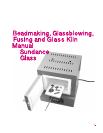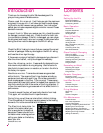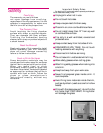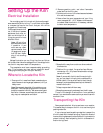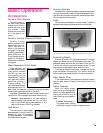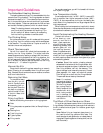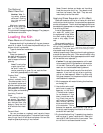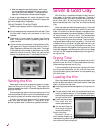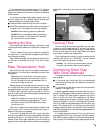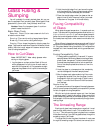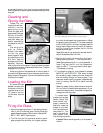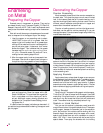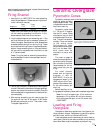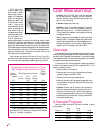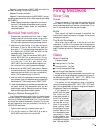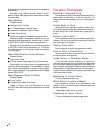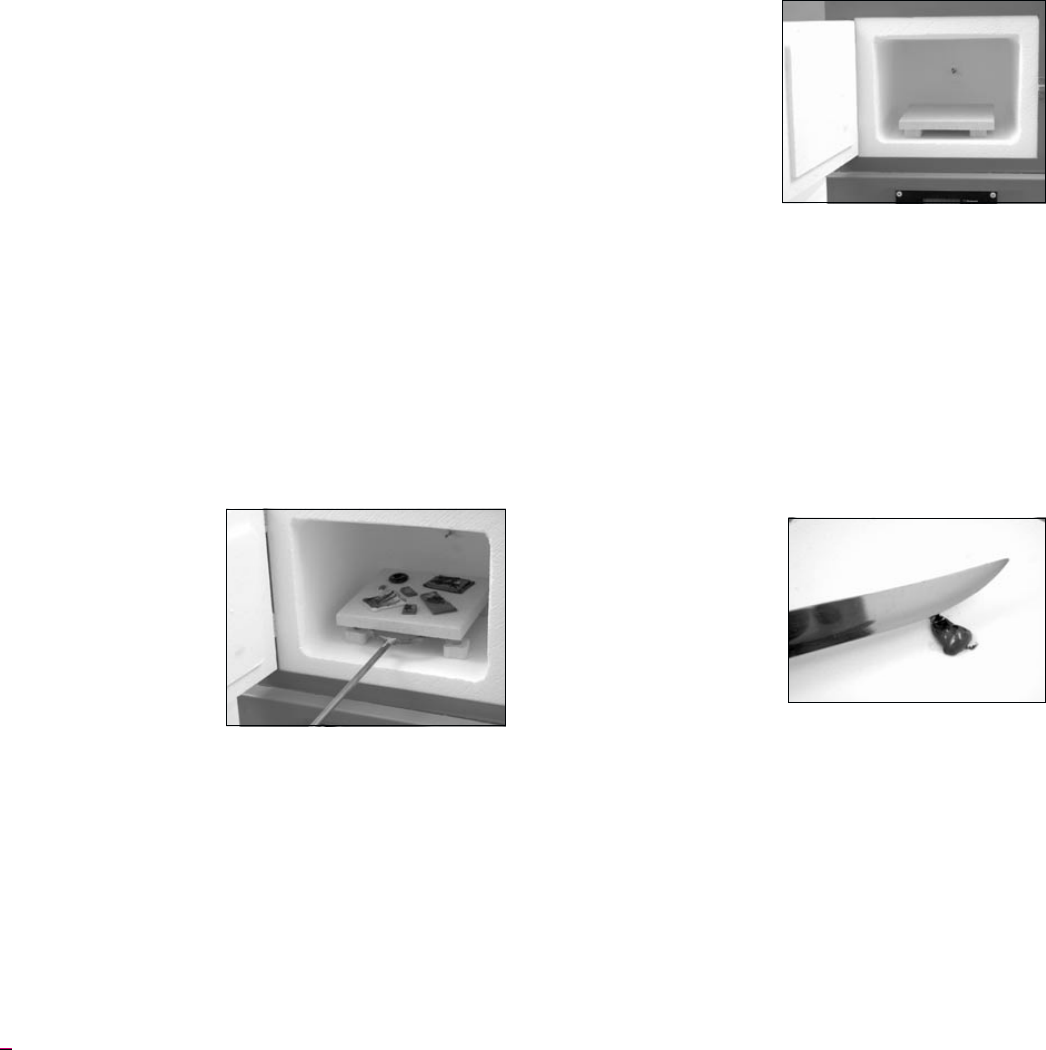
Important Guidelines
The Embedded Heating Element
The heating elements of your kiln are embedded into the
ceramic fiber firing chamber. The firing chamber surface is
hardened to a depth of ¼”. This makes the fiber more dura
-
ble. It is important that you do not touch the firing chamber
with sharp objects. These can penetrate the fiber surface
and contact the heating element, which is a shock hazard.
Note: The heating element under power is danger
-
ous. Do not touch the element with anything! Turn
the kiln switch off before inserting an enameling
fork into the firing chamber to remove a shelf.
The Clicking Noise
Do not be concerned if your kiln makes a clicking sound
during firing. Your kiln contains a relay, which sends power
to the element. The relay clicks as it cycles on and off to
maintain the correct temperature.
Check Thermocouple
You will find a small rod, called the thermocouple, ex
-
tending into the firing chamber. The digital controller
senses temperature by reading a voltage from the thermo-
couple. If this rod is pushed out of the firing chamber, the
kiln will assumethat the firing chamber iscold. This will re-
sult in an over-fire. Be sure the rod extends into the firing
chamber by ½” - ¾” before firing the kiln.
Vacuum the Kiln
Clean the kiln before firing glass, enameling, or ceramic
glaze. (Cleaning is not necessary when firing silver or gold
clay). Usea soft brushnozzle on avacuum cleanerto remove
dust from inside the kiln.
Removing Hot Ware
To remove hot ware
from the kiln, turn off
the kiln. Carefully slide
an enameling fork un
-
der the shelf. Place the
hot shelf on a large ce
-
ramic kiln shelf in front
of the kiln. Wear thick
work gloves.
Firing Log Book
Record the following information in a firing log book:
■
Date
■
Firing temperature, speed and hold; or Ramp/Hold pro
-
gram
■
Starting time
■
Total firing time
■
Type of pieces
■
Firing results
As you gain experience, you will find a wealth of informa
-
tion in your firing logs.
Low Temperature Holds
A low temperature hold (i.e. 200° - 300°F) is more diffi
-
cult to maintain than higher temperature holds (1400° -
1700°F). At low temperatures, turning on the heating ele
-
ment affects firing temperature to a larger degree than at
high temperatures.
When holding at a low temperature, heat the kiln slowly.
Otherwise the temperature may overshoot the hold temper
-
ature before the element turns off.
Avoid Contaminating the Heating Element
Contact with silica or
silica bearing com
-
pounds, such as kiln
wash, glass separator,
alumina hydrate, glass,
enameling powder, and
ceramic glaze, will ruin
the heating element.
Never fireglazed ceramic
ware, glass, or enameling
directly on the firing chamber bottom. Use a ceramic shelf
on short posts to protect the bottom from glaze drips, glass
and enameling powder.
Caution: Some kilns contain a heating element
embedded inthe bottom ofthe firing chamber.Ma-
terials such as glass and glaze, if absorbed into the
fiber firing chamber, can ruin the element. This
type of damage is not covered by warranty. Prevent
glass separator, kiln wash, and alumina hydrate
from falling from a shelf onto the firing chamber.
These materials can destroy the element.
Note: If a contami
-
nant such as dripping
glass or glazeembeds
into the firing cham
-
ber, unplug the kiln.
Gently scrape off the
contaminant with a
knife, being careful
not to damage the
heating element.Vac
-
uum the kiln.
The Effect of Silver Residue on Glass
Firing silver clay leaves traces of silver in the pores of the
firing chamber. Sometimes there isenough silver residue in
the kiln to affect colors of glass. For instance, green might
turn yellow.
Note: Before firing an important glass piece in a
kiln used for silver clay, perform color tests. Fire
small samples of each glass color on a base sheet of
clearglass. Placetheglassona fireclayshelf(notthe
soft fiber shelf).
6



